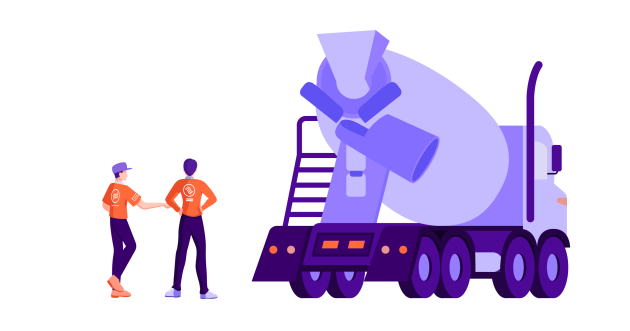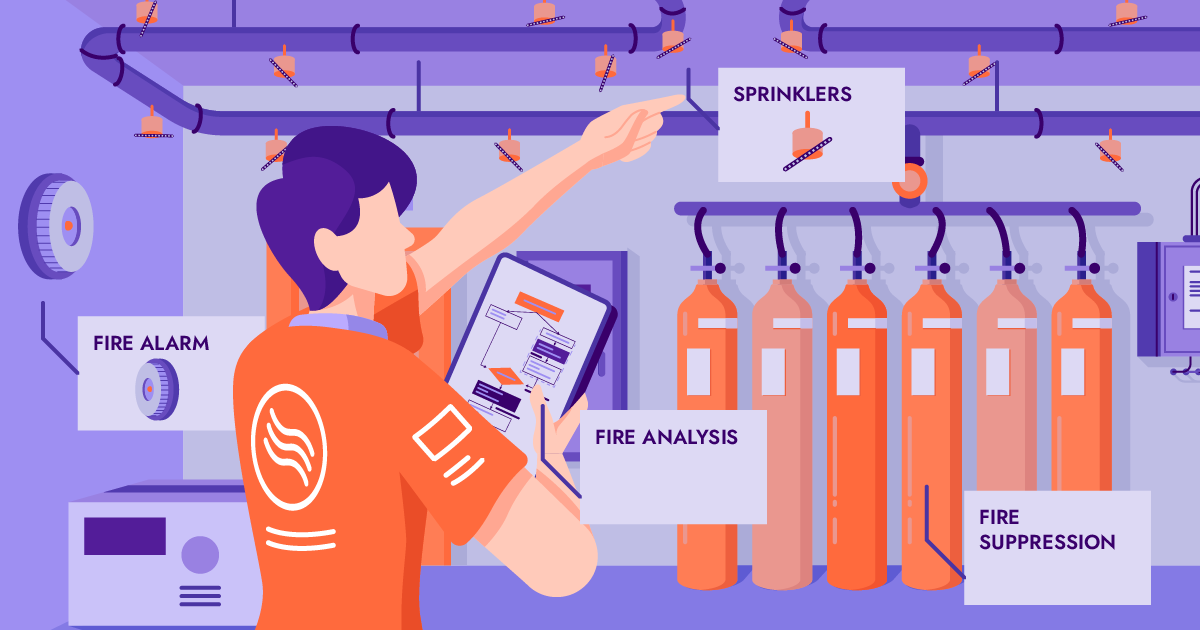Essential Guide to Bulldozer Maintenance: Tips & Schedules

Maintaining a bulldozer in top shape is essential for its performance, longevity, and minimising costly downtime. Regular maintenance ensures that all the components are functioning optimally, allowing you to tackle tough jobs with ease.
In this comprehensive guide, we will walk you through the key aspects of bulldozer maintenance, providing valuable tips and schedules to keep your equipment running smoothly.
Overview:
This blog post will cover everything you need to know about bulldozer maintenance. We’ll begin by understanding the key components of a bulldozer and their significance in its overall operation. Then, we’ll dive into the importance of daily maintenance checks and provide a handy checklist to follow. We’ll also discuss periodic maintenance schedules, cleaning, proper storage techniques, and the role of maintenance records. Additionally, we’ll address common maintenance issues and the value of preventive maintenance programs. Lastly, we’ll introduce you to FieldInsight, a powerful asset management software that can revolutionise your bulldozer maintenance practices.
Understanding the Key Components of a Bulldozer
A bulldozer comprises several crucial components that require regular maintenance to ensure optimal performance. Let’s take a closer look at each one and understand its function in the overall operation of the bulldozer.
Engine: The engine is the powerhouse of the bulldozer, generating the necessary force to move heavy loads. Regular maintenance of the engine includes oil changes, air filter replacement, and checking the fuel system. You will also need to become familiar with your engine filter, engine valve, fuel filter cartridge, and more.
Hydraulic System: The hydraulic system controls various functions, such as raising and lowering the blade, operating the ripper, and controlling the tracks. Regular inspection and maintenance of hydraulic fluid levels, filters, and hoses are vital to keep the system running smoothly.
Tracks: The tracks provide traction and stability to the bulldozer. Regularly inspecting the tracks for wear, tension, and alignment is crucial. Proper lubrication and cleaning of the undercarriage are also essential for prolonged track life.
Blade: The blade is the primary tool used for earthmoving. Regularly checking the blade’s cutting edge, hydraulic cylinders, and pivot points ensures optimal functionality during operation.
By paying attention to these key components and performing regular maintenance, you can extend the life of your bulldozer and prevent costly breakdowns. No one wants to deal with old and damaged components. With regular maintenance you can ensure everything is operating at peak performance.
Daily Maintenance Checks for Bulldozers
Performing daily maintenance checks on your bulldozer is a crucial preventive measure. It helps identify potential issues before they escalate into costly repairs or breakdowns. Here’s a checklist of daily tasks to keep your bulldozer in top shape:
Daily bulldozer maintenance schedule to do’s:
- Check fluid levels (check the engine oil, hydraulic fluid, coolant, etc.).
- Inspect tracks for wear, damage, or misalignment.
- Monitor blade condition and adjust if necessary.
- Clean air filters and remove debris from radiator grills.
- Test all lights, signals, and alarms.
- Check tire pressure (if applicable).
- Lubricate pivot points, joints, and other moving parts.
- Inspect belts, hoses, and electrical connections for wear or damage.
- Following this checklist diligently ensures that your bulldozer is ready to tackle any job without unexpected interruptions.
Always refer to the owners manual or manufacturer’s guidelines for more assistance.
Periodic Maintenance Schedules for Bulldozers
In addition to daily maintenance checks, certain tasks should be performed periodically to ensure the efficient operation of your bulldozer. If you are operating your dozer on rugged terrain or in wet and dirty environments, your required maintenance will need to be increased to avoid rust and debris build up.
Your dozer maintenance checklist:
Changing oil and filters: Regular oil changes promote engine health and prevent premature wear. Refer to your manufacturer’s guidelines for recommended intervals.
Greasing joints: Proper lubrication of pivot points and joints reduces friction, minimising wear and extending the life of these components.
Adjusting track tension: Over time, the tension in the tracks can become loose or tight. Adjusting it periodically ensures optimal track performance and reduces wear on your dozer’s undercarriage components.
Adhering to recommended intervals for these maintenance tasks is crucial. It keeps your bulldozer in top-notch condition, maximising its performance and durability.
Cleaning and Proper Storage of Bulldozers
Cleaning and proper storage practices play a vital role in preserving the condition of your bulldozer. Here are some practical tips to keep in mind:
- After each use, remove debris and mud from the tracks, undercarriage, and blade to prevent rust and damage.
- Wash the bulldozer thoroughly and apply a rust inhibitor if necessary.
- Store the bulldozer in a covered area or use a protective tarp to shield it from the elements.
- If storing for an extended period, start the engine periodically to prevent fuel system issues.
- By incorporating these cleaning and storage practices into your maintenance routine, you can prolong the lifespan of your bulldozer and prevent unnecessary repairs.
The Role of Maintenance Records in Bulldozer Upkeep
Maintaining comprehensive records of your bulldozer’s maintenance activities is invaluable. Here’s why:
- It helps you track performed maintenance tasks, upcoming maintenance needs, and overall equipment health.
- Maintenance records aid in warranty claims and provide proof of regular servicing.
- Analysing maintenance data enables you to identify patterns, spot recurring issues, and optimise maintenance schedules.
- To create an effective maintenance log, record details such as the date, tasks performed, parts replaced, and any observations or recommendations. Embrace digital solutions like FieldInsight to simplify maintenance record management.
Handling Common Bulldozer Maintenance Issues
Despite regular maintenance, bulldozers may encounter common issues. Here are some tips to handle them:
Recognizing issues: Train your operators to be vigilant and report any unusual noises, vibrations, leaks, or performance changes promptly.
Basic troubleshooting: Encourage operators to perform basic troubleshooting steps outlined in the manufacturer’s manual, such as checking fuses, circuit breakers, and fluid levels.
Calling professionals: Some maintenance tasks require specialised knowledge and tools. Don’t hesitate to call in professional assistance for complex issues or major repairs.
Taking a proactive approach to maintenance issues minimises downtime and keeps your bulldozer operating at its best.
The Value of a Preventive Maintenance Program for Bulldozers
Implementing a preventive maintenance program for your bulldozers brings numerous benefits:
- Reduced downtime: Regular maintenance prevents unexpected breakdowns, keeping your bulldozer operational and productive.
- Extended lifespan: Well-maintained bulldozers have longer equipment lifespans, providing a higher return on your investment.
- Cost savings: Addressing small issues during routine maintenance helps avoid major repairs and associated expenses.
To establish an effective preventive maintenance program, schedule routine inspections, create maintenance checklists, and leverage the power of maintenance management software like FieldInsight.
Safety Precautions in Bulldozer Maintenance
Safety should always be a top priority during bulldozer maintenance activities. Here’s why fostering a safety-oriented culture is essential:
Protecting personnel: Safety measures minimise the risk of accidents, ensuring the well-being of your maintenance personnel.
Enhancing maintenance results: When employees feel safe, they can focus on performing maintenance tasks accurately and efficiently.
Lowering accident rates: A safety-oriented approach reduces the likelihood of accidents, creating a safer working environment for everyone.
Emphasise proper training, provide personal protective equipment, and enforce safety protocols to foster a culture of safety within your maintenance team.
Utilising FieldInsight for Bulldozer Maintenance
FieldInsight, our powerful asset management software, can revolutionise your bulldozer maintenance practices. Here’s how it can help:
Streamlined task management: Schedule, assign, and track maintenance tasks effortlessly within the software.
Maintenance history and records: Maintain comprehensive records of all maintenance activities, facilitating analysis and future planning.
Real-time monitoring: Utilise GPS tracking and real-time updates to monitor the location and progress of your bulldozers.
FieldInsight empowers you to take control of your bulldozer maintenance, improving efficiency, and minimising downtime.
Conclusion
Regular and comprehensive bulldozer maintenance is paramount for optimal performance, extended equipment lifespan, and minimal downtime. By understanding the key components, performing daily checks, following periodic maintenance schedules, and implementing preventive measures, you can ensure your bulldozers are always ready for the toughest tasks.
Don’t forget to explore FieldInsight as a comprehensive solution for managing your bulldozer maintenance tasks. With its advanced features, you can streamline your maintenance processes, increase productivity, and achieve better results.
Remember, investing time and effort in maintenance today saves you from headaches and costly repairs tomorrow. So, prioritise your bulldozer’s well-being, and reap the rewards of smooth operations and satisfied customers.
Ready to revolutionise your bulldozer maintenance?
Schedule a discovery call with us today to find out how FieldInsight can optimize your assets, extending their lifespan and minimizing expensive downtime.
What You Should Do Now
- Book a Demo. You’ll be in touch with an automation expert who has worked in this space for over 5 years, and knows the optimal workflow to address your needs.
- If you’d like access to free articles about managing HVAC workflows, go to our blog.
- If you know someone who’d enjoy reading this page, share it with them via email, Linkedin, Twitter, or Facebook.







